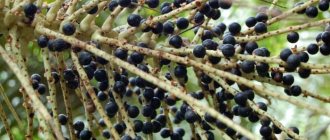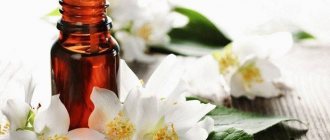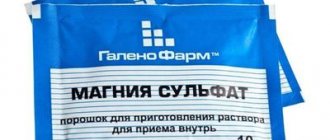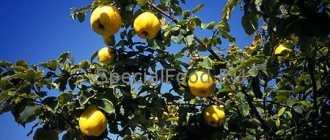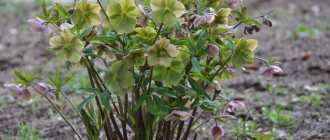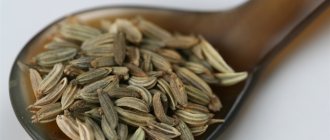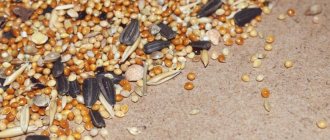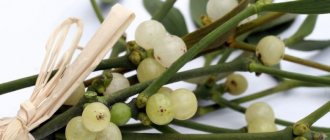Fashion for eating styles or methods of losing weight changes like a kaleidoscope. Stopping gluten, lactose or vinegar drinks are just a few of the "diet hits". Now it's time to go on the cactus diet. What is it and what results does it give?
Medicinal properties of the plant
Opuntia is the largest genus of the Cactus family. The microelements and vitamins that the plant is rich in have made it possible to widely use it in traditional and folk medicine.
The fruits and stems of prickly pear are rich in various microelements: potassium, calcium, magnesium, phosphorus, as well as vitamins C, PP, B1, B9, A and beta-carotene.
Due to its high acidity and coarse dietary fiber content, prickly pear is widely used to restore digestion. Helps cure diarrhea, dysentery and has an astringent effect. Preparations based on this cactus stabilize metabolic processes in the body .
The medicinal properties of prickly pear can restore the functioning of the kidneys, liver and spleen, as well as help the body cope with bronchitis. For rheumatism, compresses made from the pulp of prickly pear stems crushed into a paste help relieve pain. The flowers of the plant are able to stop bleeding due to their astringent effect.
The plant is an excellent natural antibiotic, capable of increasing immunity and having a restorative effect on the entire body as a whole.
What can I expect from using the oil on my skin?
Oil from the seeds of the fruits of the Opuntia cactus is used for the skin of the face and body, for hair and nails. It is ideal to apply it morning and night, 1 drop on the skin of the face, including the eyelids and nail cuticle . The oil penetrates the skin perfectly and has a powerful regenerating effect. The results that are obvious when using the oil:
- Restoring elasticity and smoothing the skin.
- Preservation and restoration of an even and healthy complexion
- Softer, more delicate and hydrated skin
- Narrows pores and prevents acne
- Reduce the appearance of dark circles under the eye
- Reducing the appearance of fine wrinkles
- Prevention of premature wrinkle formation
- Healthy nails without splitting.
- Healthy and moisturized hair and scalp.
Opuntia cactus seed oil is suitable for all skin and hair types . Gifts of Morocco offers you the multi-use benefits of one bottle of Prickly Pear Seed Oil The oil you can buy from us is premium Prickly Pear Seed Oil, a pure and natural product. For your convenience, there is a volume of 30 ml with a dispenser and 15 ml with a pipette.
To summarize, the benefits of prickly pear cactus seed oil:
1. Quickly absorbed by the skin. The essential fatty acids contained in the oil, namely its high linoleic acid content, make it quickly absorbed by the skin. It penetrates deeply without leaving a greasy residue.
2. Restores elasticity and complexion. High antioxidant activity stimulates cell renewal, leaving skin fresh. This oil reduces redness and hyperpigmentation.
3. Moisturizes, softens and nourishes the skin. This oil intensely hydrates the skin and is suitable for all skin types, but works especially well for dry, mature skin. The high content of linoleic acid softens even the driest skin. You won't find any other oil that makes your skin softer.
4. Tightens pores. The essential fatty acids found in prickly pear cactus seed oil preserve collagen in your skin, which helps unclog your pores.
5. Removes age spots. Evens out skin color. This oil is unmatched in its ability to brighten skin and get rid of dark spots. Vitamin K helps lighten dark circles under the eyes and minimize redness.
6. Slows down the aging process of the skin. Contains the highest levels of Betelains (a water-soluble antioxidant with powerful anti-aging effects) of any known source, such as pomegranate, blueberry and beets.
7. Prevents the appearance of wrinkles. Cactus oil has a huge vitamin E content, 895 mg per kg (150% more than argan oil). Vitamin E is a free radical scavenger and increases cell renewal. The high fatty acid content reduces wrinkles and adds firmness by destroying free radicals.
8. Oil does not clog the skin. Having a high (60%) percentage of linoleic acid and a low (20%) percentage of oleic acid makes this oil completely non-comedogenic and means it will not clog pores.
9. Great for sensitive skin. This oil does not cause irritation, deeply nourishes and soothes inflammation.
Your choice is always yours, dear guests of our site. We made our choice a long time ago. We buy prickly pear cactus seed oil from production in Morocco and offer you the best that we use ourselves.
Our website presents both pure cactus oil and products made on its basis. Serum for skin care around the eyes contains cactus oil and argan oil. Shampoo with cactus oil not only protects your hair from negative effects, but also restores damaged roots. Scrub with cactus oil cleanses the skin and eliminates flaking. Body milk with cactus oil will retain moisture in your skin.
How long and how to store Opuntia cactus seed oil
According to a study carried out in autumn 2021 at the Regional Center for Agricultural Research in Marrakech (National Institute of Agricultural Research (INRA Morocco)) entitled: “Oxidative stability under different storage conditions and detection of adulteration of prickly pear seed oil”, it is best to store prickly pear oil in cold temperatures no higher than 4°C .
Then it fully retains its beneficial properties for 18 months. It should be free from direct sunlight and air exposure. Our oil “Gifts of Morocco” in a dark bottle fully meets these requirements. Under other storage conditions, the oil will deteriorate faster. Publication date: 03/15/2018 19:48:05
How to cook?
Prickly pear is harvested at any time of the year ; plants that are no more than two years old are suitable for this.
The very first stage in preparing prickly pear raw materials for processing is the removal of its strong, sharp thorns and hairs. The peel should be left. The leaves are fleshy, so they are not dried but used fresh. A tincture is prepared from the obtained raw materials. In addition to leaves, you can also use flowers to prepare a medicinal solution. The first option is better suited for the treatment of obesity, diabetes and dysbacteriosis, and the second - heart disease.
Leaf tincture
- Steam the crushed leaves with boiling water.
- Leave for a week.
- Take the resulting solution by diluting 2 teaspoons in 50 ml. water.
When prepared correctly, the infusion will have a viscous, mucous consistency.
Tincture of flowers
- Cactus flowers are poured with vodka in a ratio of 4:1.
- The composition is kept for a week in a cool, dark place.
- Take 15-20 drops twice a day, diluting a little with water.
If you plan to use the medicinal properties of prickly pear to treat the skin, the peeled leaves must be crushed and the juice squeezed out of them.
How to distinguish a fake from the original
Today, there are dozens of online pharmacies and stores offering medications for the treatment of obesity. However, when choosing a company you should be as careful as possible, because products that really work are often counterfeited. As a result, the client receives a medication that does not provide any benefit.
To avoid becoming a victim of scammers, it is better to buy the original Fatzorb on the manufacturer’s official website. A detailed description, the opinion of medical representatives, and reviews of people who managed to lose weight are available here.
The resource has a support service that provides the client with all the important information.
How long can the product be stored?
Prickly pear stems can be stored whole or cut into pieces for several weeks, but it is important to remember that the acidity of the raw material decreases over time. You can extend the shelf life by pickling or drying the stems .
Prickly pear is a useful plant, but if you decide to grow it at home, then articles on plant types, as well as propagation and care will be useful.
The components of the oil that make it so effective.
All vegetable oils contain essential fatty acids (EFAs). When the skin doesn't get enough EFAs, its barrier breaks down and we end up with dry, irritated, dull skin. Of any oil on the beauty market, prickly pear contains the highest percentage (88%) of unsaturated fatty acids , which are important for promoting healthy skin cell production. It also contains the highest level of tocopherol or vitamin E, which protects the skin and helps it retain moisture.
The oil contains 60.5% linoleic acid - omega 6 EFA, which immediately nourishes and restores. Linoleic acid strengthens our skin's barrier, allowing it to better retain moisture. Sometimes called vitamin F, this fatty acid fights inflammation, heals acne scars and helps soften skin. It may even help heal herpes and minor burns.
Further, the oil contains 20.6% oleic acid. Also found in avocado, almond oil and olive oil, this fatty acid helps other beneficial components penetrate the skin more easily.
13.9% palmitic acid has antioxidant and healing properties and may even help with dermatitis and eczema. This acid is found in our skin, but the amount decreases over time as we age.
Tocopherols (vitamin E). Prickly pear seed oil contains almost 150% more vitamin E than argan oil. This natural antioxidant acts as a free radical scavenger, preventing them from causing damage to the skin. Vitamin E has strong anti-inflammatory properties, helps to heal wounds faster and restore skin after damage caused by ultraviolet rays and environmental pollution. Vitamin E, by hydrating the skin, prevents further water loss. This helps reduce the appearance of wrinkles. Tocopherols protect skin cells that create collagen and elastin (the protein that helps skin maintain its shape), which helps reduce acne scars. Read more about the benefits of vitamin E for skin.
Phytosterols. This component of the oil helps the skin retain moisture and also helps in the production of collagen, keeping our skin youthful and soft and completely reversing the effects of aging, which is already proven.
Polyphenols . Like tocopherols, they are also free radical scavengers. Polyphenols prevent and treat sun damage and manage redness and irritation.
This valuable oil also contains vitamin K, which fights dark spots under the eyes, whitens the skin and promotes skin elasticity.
Application
For weight loss
The components that make up prickly pear promote weight loss. Fiber creates a feeling of fullness in the stomach and inhibits the release of the hunger hormone ghrelin, which reduces the production of overeating and the feeling of hunger.
The plant contains vitamin B6, thiamine and riboflavin, which speed up metabolism, maximize fat burning and convert food into usable energy. It is recommended to eat at least 100 grams of crushed prickly pear leaves daily ; you can also make weight loss vinegar and extract.
In addition to the leaves, prickly pear fruits have a fat-burning effect. In women who regularly use them, the appearance of cellulite is reduced due to the fact that the blood supply to the subcutaneous tissue is normalized and the formation of a fat layer is prevented. Low-calorie dishes can be prepared from cactus.
Mexican salad
Ingredients:
- sweet yellow and red pepper – 30 grams each;
- tomato – 30 grams;
- canned corn – 20 grams;
- avocado pulp – 60 grams;
- several half rings of red onion;
- black olives – 6-7 pieces;
- prickly pear fruits – 70 grams;
- olive oil;
- lime;
- cilantro;
- salt, pepper to taste.
Preparation (ingredients are based on two servings):
- Cut the peppers and tomatoes into equal pieces, mix with canned corn.
- Add avocado pulp, onion and olives cut in half to the slices.
- Mix with diced prickly pear fruits.
- Season with olive oil, sprinkle with freshly squeezed lime juice, season to taste with salt, pepper and finely chopped cilantro.
Fried cactus
- 500 grams of prickly pear are cut into thin slices and boiled for half an hour until tender.
- Cool the cactus. Take four eggs and separate the whites from the yolks.
- Beat the whites and yolks separately and then combine.
- Dip the cactus in the egg mixture and bread it in flour.
- Fry the pieces on both sides and add salt.
- The finished dish can be served with onions, tomatoes and garlic.
Modern pharmaceuticals offer weight loss medications based on prickly pear extract . One capsule, taken on an empty stomach 20-30 minutes before breakfast, dulls feelings of hunger, and the body feels full when eating small portions of food.
For skin
A product with a healing effect
- The prickly pear is removed from the needles and the skin is removed.
- The bare sheet, ready for use, is applied to the damaged area.
- The top is secured with a bandage.
- The procedure is carried out no more than five times.
Mask for mature skin
- Prickly pear oil is mixed with pomegranate seed extract.
- Apply with light massage movements onto clean, damp skin.
- After half an hour, the remnants of the mask are removed with a sponge or napkin.
- The mask is suitable for women over 45 years old; a lasting effect is achieved when used 1-2 times a month.
For pneumonia
For treatment you need a decoction of this plant:
- Grind 50 grams of leaves, add 100 grams of water, bring to a boil.
- Cook for half an hour, you should end up with 100 grams of broth.
- Strain the boiled liquid.
- Take one teaspoon three times a day.
For immunity
To strengthen the immune system, as well as to prevent flu and colds, it is recommended to use the following tincture:
- Mix several fresh prickly pear flowers with three internal walnut partitions.
- Pour in 500 ml of vodka.
- Leave in a dark place for a week.
- Take 1 tbsp. three times a day before meals.
- The course of treatment is 10 days.
For digestion
To restore the functioning of the gastrointestinal tract, you can use the following recipe:
- Finely chop half a glass of prickly pear stems and pass through a meat grinder.
- Add one glass of sugar.
- Place in a dark place for three days.
- Pour one glass of red fortified wine into the mixture.
- Place in a dark place for a day.
- Strain the mixture.
- Take one tablespoon twice a day half an hour before meals.
- The course of treatment is one month.
You can also use a non-alcoholic recipe:
- Place 2-3 tbsp in a thermos. chopped cactus and one tangerine peel.
- Pour in two glasses of hot milk.
- Leave for 12-14 hours.
- The mixture is filtered.
- Take half a glass three times a day before meals.
For teeth
For damaged and inflamed gums, prickly pear is used externally:
- The spines are removed.
- The cactus is peeled.
- A piece is applied directly to the wound or sore.
You can also use freshly squeezed prickly pear juice for these purposes and rinse your mouth every three hours.
Notes of an Astrakhan naturalist. Ripe cactus fruits
Column author: Vladimir Pankov
We have written more than once about a unique natural monument in the Kharabala region, where prickly pear cacti have been growing for more than 100 years. Usually these overseas guests, with whose help they tried to fight desertification, attract attention in early June, when they bloom - but I happened to see them in August, when the fruits ripen. But you need to be very careful when trying wild prickly pear berries...
The natural monument “Urochishche Kordon”, where American prickly pears grow, is located approximately 35-40 km from the left bank highway to Volgograd, not far from the village of Tambovka, Kharabalinsky district. Moreover, these kilometers after turning off the highway have to be covered either on concrete pavement broken up by the wheels of military trucks, or along a dirt road covered with sand, on which many small cars are stuck.
In August, the road to the cacti poses a particular problem, because during the day it is usually very hot - and on the day when I went with the intention of photographing the prickly pear harvest, the temperature went beyond 40 in the shade. Moreover, it was very difficult to find this shadow, and gray larks hid in the unsteady shadow of desert plants, almost devoid of leaves. The dancing wheatears, in turn, looked for the elusive shadow from the same bare branches of black saxaul.
But when I finally got to the fruit-bearing cacti, the view that opened up fully rewarded me for the difficulties of the path - raspberry fruits simply strewn the fleshy paws of the cacti spreading along the ground. Among the fruits there was also a local inhabitant - a female Bolivaria short-winged mantis. Among the sharp needles, the insect felt quite at ease and safe.
The cactus fruits are covered with small, almost imperceptible spines, which turned out to be very sharp and tried to stick into your fingers. It’s good that I was warned about the insidiousness of the fruits and did not immediately taste them - picking the needles out of the tongue would probably have been very unpleasant. Only after carefully removing the skin along with the thorns did I decide to try the ripe berries - the taste turned out to be quite sweet, but that’s all.
Numerous needles on the fruits and on the plants themselves make prickly pear fruits unattractive to either local residents or wild animals. In fact, only ants can freely feast on sweet berries. Therefore, the fruits last for a very long time - I also went to this place in winter to photograph cacti in the snow, and the dried berries lay among the needles. By the way, the thorns have not become less sharp due to frost and winds.
Blooming cacti
Let us recall that the problem of desertification in our region is not new; back in the 19th century, due to uncontrolled grazing of livestock, primarily sheep, the vegetation cover over vast areas was practically destroyed. As I wrote
in our column, candidate of biological sciences Vladimir Afanasyev, then a real natural disaster occurred - the sands, not restrained by the roots of plants, began to move, absorbing farmland and pastures. Zamyanovskaya village was forced to move to another place to escape the advancing sands, then the same fate befell Lebyazhya and Durnovskaya. A threat loomed over the villages of Seroglazovskaya and Kopanovskaya.
Vladimir Avgustovich Paletsky, a specialist in sand consolidation, who arrived in Astrakhan in 1886, described what he saw in the village of Zamyanovskaya, which the sands overtook in a new place: “... the sands again moved onto the village, some outlying courtyards were completely filled up, fences, outbuildings were immersed in sand, heaps of sand lie along the streets. Residents are struggling with sand, shoveling it from their yards, taking it to their backyards, to the streets, but this, of course, is useless work.”
Now in the Astrakhan region, in the south of Dagestan and a significant part of Kalmykia, vast areas completely devoid of vegetation are again observed. Open sands cover the pastures; dust storms even reached Astrakhan several times, leaving the townspeople in awe. Shepherds are already forced to move their flocks of sheep to other areas, and over time the vegetation cover may recover.
Side effects and contraindications
It is not recommended to take prickly pear and preparations based on it in case of individual intolerance to the components of the plant, aggravated hemorrhoids and chronic cystitis. Side effects when taken are manifested in the form of a headache, which suddenly appeared half an hour after eating prickly pear, nausea, vomiting, and red spots on the body. If such manifestations occur, treatment should be stopped immediately.
Prickly pear spines, masquerading as delicate fluff, are very dangerous and difficult to remove . If you swallow even one, erosion of the esophagus, stomach or intestines is inevitable. The first alarm signal is pain, after which an inflammatory process develops. The only way to remove an embedded needle is through surgery.
Due to its healing properties, prickly pear is recognized by both folk and traditional medicine. Preparations based on this cactus have been successfully used for many years in the fight against illnesses, and also allow for effective prevention.
If you find an error, please select a piece of text and press Ctrl+Enter.
Fatzorb price, where to buy
To avoid becoming the owner of a counterfeit, consumers should not purchase the drug on dubious websites that promise huge discounts. We recommend purchasing the complex on the official website of the manufacturer, which guarantees the high quality of the product.
The trademark does not hide the accompanying documentation, so you can find out about the certificate from the call center by calling the phone number on the company’s resource. You can order goods in two clicks. Customer support staff will answer all your questions, tell you about the benefits of Fatzorb, and organize fast delivery to any city in the country.
Official website for ordering or consultation
The price for the complex is determined by the manufacturer, and does not always remain static. The site often runs promotions that allow you to get substantial discounts. In this case, the price of Fatzorb becomes so attractive that buyers rush to order several packages at once.
Delivery is carried out by trusted transport services. Payment is made upon receipt of the parcel. This makes it possible to make sure that everything is fine with the product and that it fully corresponds to what was declared.
